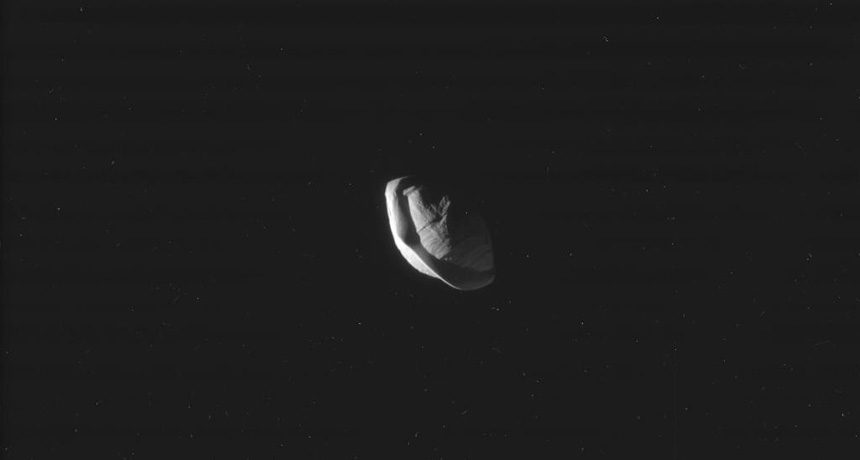In new Cassini portraits, Saturn’s moon Pan looks like pasta

Saturn serves up the closest thing to space pasta, the latest round of images from NASA’s Cassini probe, released March 9, show.
On March 7, the spacecraft snapped a series of portraits of Pan, Saturn’s small moon that orbits within a 325-kilometer gap in one of the planet’s rings. Taken at a distance of 24,572 kilometers from the moon, these are the closest images of Pan to date.
The close-ups could help refine astronomers’ understanding of the mini moon’s geology and shape. Pan has a distinctive ridge along its equator, which in the past has prompted astronomers to liken the moon’s shape to that of a flying saucer. In the new images, Pan’s ridge isn’t uniform like that of a fictional alien spacecraft. Instead, it’s uneven, creating an overall shape that more closely resembles a ravioli or wrinkly walnut.
Still, the ridge’s distinctness is “what is so spectacular and eye-opening in these images,” says imaging team leader Carolyn Porco of the Space Science Institute in Boulder, Colo. That supports the theory that the ridge is made of material from Saturn’s rings that continued to rain down on Pan’s equator after it formed.
Cassini captured the images on one of a series of ring-grazing orbits, as part of its final few months orbiting Saturn. Though it won’t get this close to Pan again, the probe is scheduled to swing past Saturn’s other “flying saucer” moon, Atlas, on April 12.